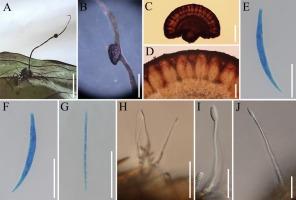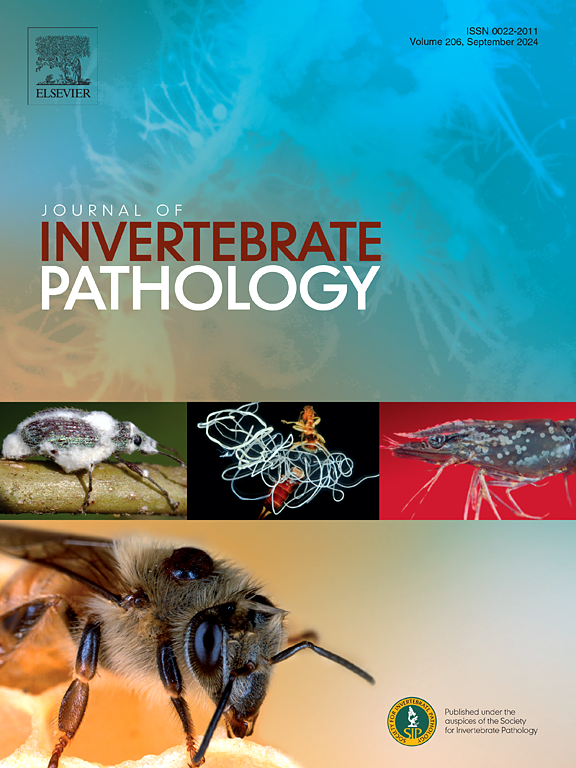Integrated taxonomy reveals three novel Ophiocordyceps species (Ophiocordycipitaceae) from China: Morphological convergence and host-specific adaptations in zombie-ant fungi
IF 2.4
3区 生物学
Q1 ZOOLOGY
引用次数: 0
Abstract
The genus Ophiocordyceps (Ophiocordycipitaceae, Ascomycota) is a globally distributed group of entomopathogenic fungi, renowned for its complex host interactions, including the “zombie-ant” phenomenon. Despite their ecological significance, taxonomic delineation within this genus remains challenging due to morphological convergence and cryptic speciation. This study describes three novel species of Ophiocordyceps—O. jilinensis, O. zongqii, and O. pseudobifertilis—discovered during mycological surveys in subtropical and temperate forests of China. The species were identified through integrated morphological characterization and multilocus phylogenetic analyses (SSU, LSU, TEF1α, RPB1, and RPB2). Ophiocordyceps jilinensis, parasitizing Curculionidae, exhibits distinct phialide and conidial morphology, forming a unique sub-clade within the Hirsutella clade. Ophiocordyceps zongqii and O. pseudobifertilis, associated with Polyrhachis ants, cluster within the O. unilateralis complex but differ in stromatal structure and asexual morphotypes. Phylogenetic results strongly support their classification as new species, highlighting the importance of molecular tools in resolving cryptic diversity. The study also discusses host specificity, behavioral manipulation, and ecological adaptations of these fungi, contributing to the understanding of Ophiocordyceps evolution and host-pathogen dynamics. Specimens were deposited in the Guizhou Medical University Mycological Herbarium (GMB), with ex-type cultures preserved for further research. This work underscores the need for continued exploration of fungal diversity to elucidate evolutionary relationships and ecological roles in natural ecosystems.

综合分类揭示了中国三种新的蛇虫草属(Ophiocordycipitaceae):僵尸蚂蚁真菌的形态趋同和宿主特异性适应
蛇虫草属(蛇虫草科,子囊菌科)是一种全球分布的昆虫病原真菌,以其复杂的宿主相互作用而闻名,包括“僵尸蚂蚁”现象。尽管具有重要的生态意义,但由于形态趋同和隐种形成,该属的分类描述仍然具有挑战性。本文报道了三种新的虫草属。中国亚热带和温带森林真菌学调查中发现的吉林、宗奇和假bifertilo。通过综合形态鉴定和多位点系统发育分析(SSU、LSU、TEF1α、RPB1和RPB2)对该物种进行了鉴定。寄生于蛭科的吉林蛇虫草具有独特的花萼和分生孢子形态,形成了蛭科中一个独特的亚支系。与多角蚁(polyrhachhis ants)有亲缘关系的蛇虫草(Ophiocordyceps zongqiii)和假bifertilis聚集在O. unilateralis复合体中,但在基质结构和无性形态上存在差异。系统发育结果有力地支持它们作为新种的分类,突出了分子工具在解决隐性多样性方面的重要性。本研究还讨论了这些真菌的宿主特异性、行为操纵和生态适应性,有助于了解虫草的进化和宿主-病原体动力学。标本保存于贵州医科大学真菌学标本室(GMB),保存前型培养物供进一步研究。这项工作强调需要继续探索真菌多样性,以阐明自然生态系统中的进化关系和生态作用。
本文章由计算机程序翻译,如有差异,请以英文原文为准。
求助全文
约1分钟内获得全文
求助全文
来源期刊
CiteScore
6.10
自引率
5.90%
发文量
94
审稿时长
1 months
期刊介绍:
The Journal of Invertebrate Pathology presents original research articles and notes on the induction and pathogenesis of diseases of invertebrates, including the suppression of diseases in beneficial species, and the use of diseases in controlling undesirable species. In addition, the journal publishes the results of physiological, morphological, genetic, immunological and ecological studies as related to the etiologic agents of diseases of invertebrates.
The Journal of Invertebrate Pathology is the adopted journal of the Society for Invertebrate Pathology, and is available to SIP members at a special reduced price.

 求助内容:
求助内容: 应助结果提醒方式:
应助结果提醒方式:


